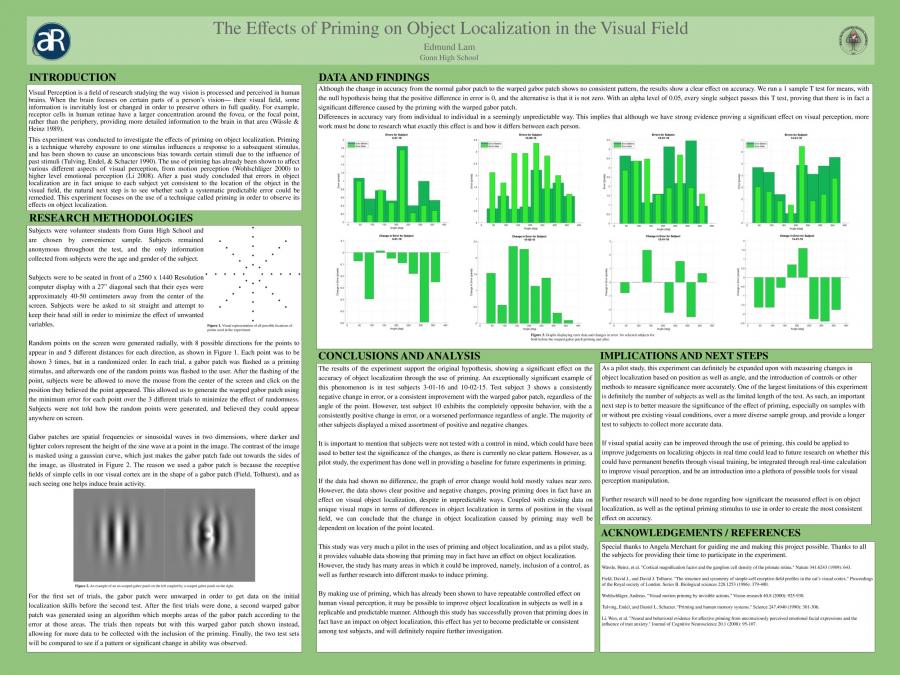Summary
Research has shown that humans have individual locational visual perception differences, such that individual subjects will make repeated similar errors when attempting to locate points in the same relative position in their visual field. Individual differences in object localization allow us to generate a localization map specific to users, which has been done in the past. This project takes this further and uses this map to generate a warped gabor patch, which is then flashed to the subject to measure whether priming could be used to improve object localization for participants. If visual-spatial acuity can be improved through the use of priming, this could be applied to improve judgments on localizing objects in real-time. This could lead to future research in whether this would have permanent benefits through visual training, be integrated through the real-time calculation to improve visual perception, and be an introduction into a plethora of possible tools for visual perception manipulation and improvement.
Personal Statement
My first introduction to visual perception science was over the summer, and I found the topic very engaging and interesting. I was able to learn more through individual research during my time as a research assistant and eventually decided to work on this project. Through my experiences developing this project and working with AAR, I learned many things about designing and implementing an experiment.

